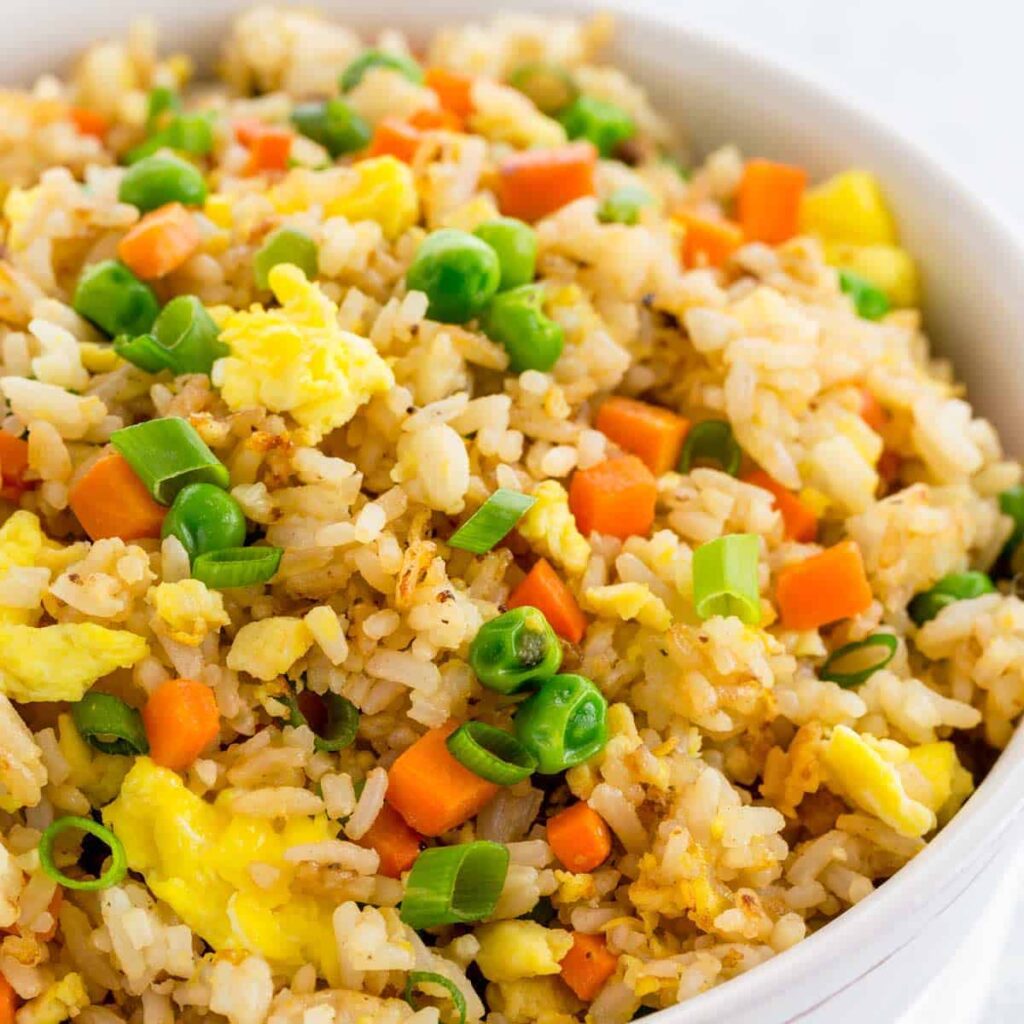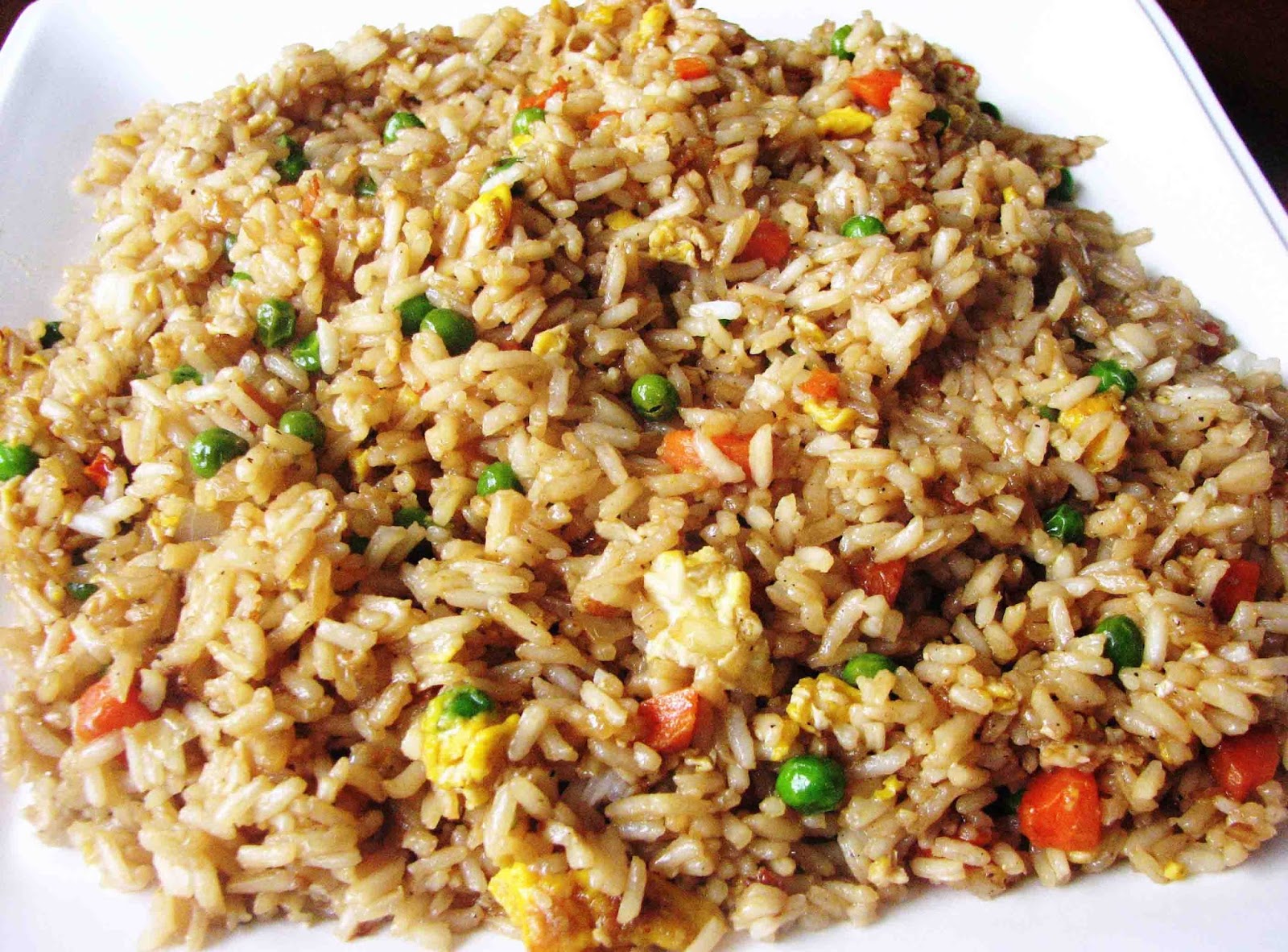Prepare to embark on a tantalizing culinary expedition as we delve into the realm of Asian fried rice. A delectable staple across numerous Asian cuisines, this versatile dish boasts a rich history and myriad variations, inviting us to explore its flavorful tapestry.
From the bustling street stalls of Bangkok to the refined restaurants of Shanghai, Asian fried rice has captured the hearts and palates of food enthusiasts worldwide. Join us as we uncover the secrets behind this beloved dish, exploring its origins, ingredients, cooking techniques, and delectable accompaniments.
Introduction to Asian Fried Rice

Asian fried rice is a popular dish with origins in East and Southeast Asia. It is typically made with cooked rice, vegetables, meat, and seasonings, and is often served as a main course or side dish.
The history of Asian fried rice can be traced back to ancient China, where it was originally known as “Chao Fan.” Over time, fried rice spread to other parts of Asia and evolved into a variety of regional variations.
Variations and Styles of Asian Fried Rice
There are many different variations and styles of Asian fried rice, each with its own unique flavor and ingredients.
- Chinese Fried Rice: Typically made with rice, eggs, vegetables, and soy sauce.
- Thai Fried Rice: Often includes shrimp, chicken, vegetables, and a sweet and sour sauce.
- Indonesian Fried Rice: Known as “Nasi Goreng,” it is made with rice, vegetables, meat, and a variety of spices.
- Japanese Fried Rice: Typically made with rice, vegetables, eggs, and a light soy sauce.
- Korean Fried Rice: Known as “Bibimbap,” it is made with rice, vegetables, meat, and a spicy sauce.
Ingredients for Asian Fried Rice
Asian fried rice is a versatile dish that can be made with a variety of ingredients. The most common ingredients include:
Rice: The type of rice used in Asian fried rice is important. Short-grain rice is the best choice, as it produces a sticky and chewy texture. Long-grain rice can also be used, but it will result in a less sticky fried rice.
Vegetables: The most common vegetables used in Asian fried rice are carrots, peas, onions, and green onions. Other vegetables that can be used include broccoli, cauliflower, and bell peppers.
Protein: The most common proteins used in Asian fried rice are chicken, shrimp, and beef. Other proteins that can be used include tofu, eggs, and Spam.
Seasonings: The most common seasonings used in Asian fried rice are soy sauce, oyster sauce, and fish sauce. Other seasonings that can be used include garlic, ginger, and sesame oil.
Step-by-Step Cooking s
Cooking Asian fried rice is a straightforward process that can be completed in under 30 minutes. Follow these step-by-step s to create a delicious and flavorful dish.
Before you begin, ensure that all the ingredients are prepped and measured. This will help the cooking process run smoothly and efficiently.
Preparing the Ingredients
- Chop the vegetables (onions, carrots, and peas) into small, bite-sized pieces.
- Mince the garlic and ginger finely.
- If using cooked chicken or shrimp, cut them into small pieces.
- Measure out the soy sauce, oyster sauce, and sesame oil.
Cooking the Rice
- Heat a large skillet or wok over medium-high heat.
- Add the oil and swirl to coat the pan.
- Pour in the beaten eggs and cook until set, stirring occasionally.
- Add the cooked rice and stir to break up any clumps.
- Cook for 2-3 minutes, or until the rice is heated through.
Combining the Components
- Add the chopped vegetables, minced garlic and ginger, and cooked meat (if using) to the skillet.
- Stir-fry for 3-4 minutes, or until the vegetables are tender-crisp.
- Pour in the soy sauce, oyster sauce, and sesame oil.
- Stir well to combine all the ingredients.
- Cook for an additional 1-2 minutes, or until the sauce has thickened slightly.
- Garnish with chopped green onions and serve immediately.
Variations and Adaptations
Asian fried rice is a versatile dish that can be customized to suit a variety of preferences and dietary restrictions. Here are some popular variations and adaptations:
Vegetarian and vegan variations often substitute tofu, tempeh, or seitan for meat. Vegetables such as broccoli, carrots, and bell peppers can be added for additional flavor and texture.
Regional Styles
Different regions of Asia have their own unique takes on fried rice. For example, Chinese fried rice typically uses soy sauce as a base flavoring, while Thai fried rice often incorporates fish sauce and chili peppers.
Additionally, the choice of ingredients and cooking techniques can be adapted based on personal preferences. For example, those who prefer a spicier dish can add more chili peppers or Sriracha sauce, while those who prefer a milder flavor can omit or reduce the amount of chili.
Serving Suggestions and Accompaniments
Asian fried rice can be enjoyed as a versatile dish, whether as a main course or a delectable side. Its savory flavors and hearty ingredients make it a satisfying option for both casual meals and special occasions.
To enhance the dining experience, consider pairing fried rice with a variety of accompaniments and side dishes that complement its flavors and textures.
Main Dish
- Fried rice can be served as a main dish on its own, offering a filling and flavorful meal.
- Accompany it with a side of soup or salad to balance the flavors and add nutritional value.
Side Dish
- Fried rice makes an excellent side dish for grilled meats, poultry, or fish, adding a flavorful and textural contrast to the main course.
- Consider serving it alongside stir-fried vegetables, steamed broccoli, or a refreshing cucumber salad.
Accompaniments
- Soy sauce, chili sauce, and hoisin sauce are popular accompaniments that add a burst of flavor and umami to fried rice.
- Pickled vegetables, such as kimchi or pickled carrots, provide a tangy and refreshing contrast to the richness of the dish.
- Fried shallots or crispy wonton strips add a crunchy texture and extra savory notes.
Nutritional Information and Health Benefits

Asian fried rice is a delectable dish that offers a balanced nutritional profile. Let’s delve into its nutritional value and explore the potential health benefits associated with its consumption.
Macronutrients
- Carbohydrates: Fried rice is a good source of carbohydrates, primarily from the rice used as its base. These carbohydrates provide energy for the body.
- Protein: The protein content in fried rice comes from the eggs, meat, or tofu often added to the dish. Protein is essential for building and repairing tissues.
- Fat: Fried rice typically contains a moderate amount of fat, mostly from the oil used in cooking. Choosing healthy oils, such as olive oil or avocado oil, can enhance the nutritional value.
Micronutrients
Fried rice is also a source of various micronutrients, including:
- Iron: Iron is crucial for red blood cell production and oxygen transport.
- Vitamin A: Vitamin A is important for vision, immune function, and skin health.
- Vitamin C: Vitamin C is an antioxidant that supports immune function and collagen production.
- Potassium: Potassium is essential for regulating blood pressure and maintaining electrolyte balance.
Potential Health Benefits
Consuming Asian fried rice in moderation can offer certain health benefits:
- Energy Source: The carbohydrates in fried rice provide a quick and sustained source of energy for the body.
- Immune Support: The presence of vitamin A and vitamin C in fried rice contributes to immune function and helps fight infections.
- Healthy Blood Pressure: Potassium in fried rice can help regulate blood pressure and reduce the risk of heart disease.
It’s important to note that the nutritional value and health benefits of fried rice can vary depending on the ingredients used and the cooking method. Opting for lean protein sources, healthy oils, and fresh vegetables can enhance the nutritional profile and maximize the health benefits of this popular dish.
Closing Summary
As we conclude our culinary journey, let us savor the memories of tantalizing flavors and vibrant aromas. Asian fried rice stands as a testament to the ingenuity and diversity of Asian cuisine. Whether enjoyed as a humble street food or an elegant main course, this dish continues to enchant diners with its irresistible combination of textures, flavors, and cultural heritage.
FAQ Corner
What are the origins of Asian fried rice?
The origins of Asian fried rice can be traced back to ancient China, where it was known as “chaofan.” Over time, it spread throughout Southeast Asia, Korea, and Japan, evolving into the diverse variations we enjoy today.
What are the key ingredients in Asian fried rice?
The foundation of Asian fried rice lies in cooked rice, typically day-old or cold rice. Other essential ingredients include vegetables (such as carrots, peas, and onions), proteins (such as chicken, shrimp, or tofu), and seasonings (such as soy sauce, oyster sauce, and sesame oil).
How do I make the perfect Asian fried rice?
To achieve the perfect Asian fried rice, use cold, day-old rice to prevent it from becoming mushy. Heat your wok or pan over high heat and add a generous amount of oil. Cook the ingredients in stages, starting with the vegetables and then adding the proteins.
Finally, combine everything with the rice and season to taste.
What are some popular variations of Asian fried rice?
Asian fried rice offers endless possibilities for variations. Some popular styles include:
